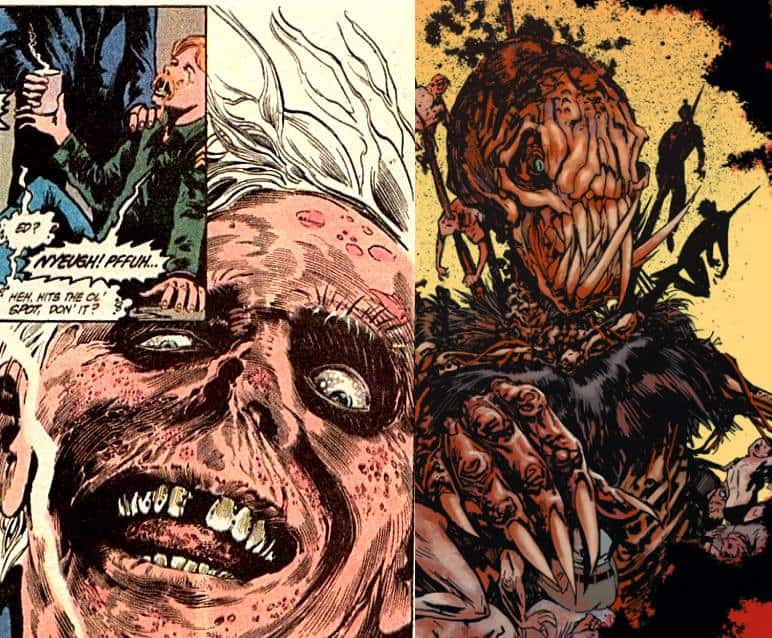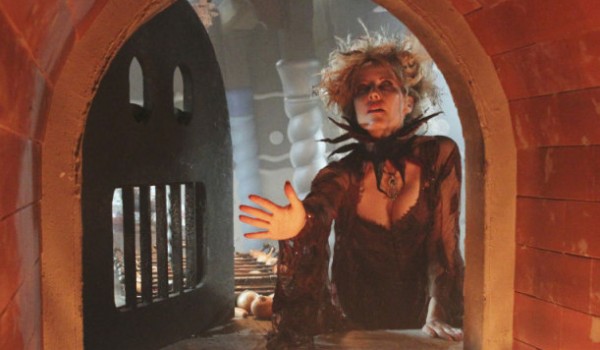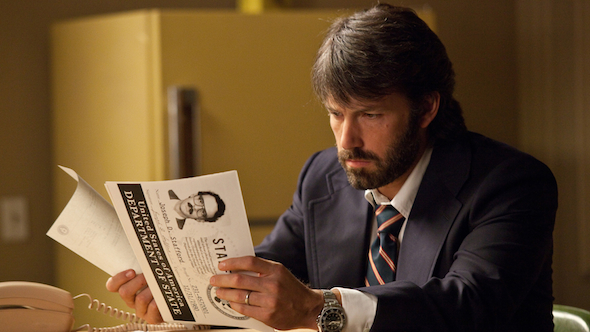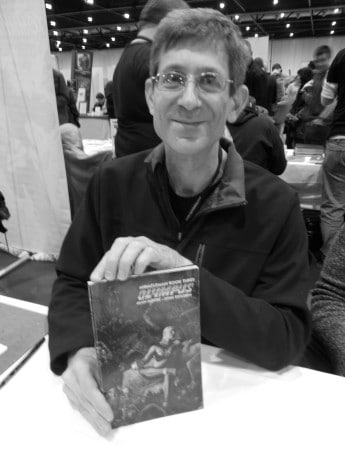 More than thirty years ago, artist John Totleben, alongside writer Alan Moore and fellow artist Steve Bissette, broke down barriers in mainstream comics through their work on Swamp Thing. His detailed artistry changed Swamp Thing forever. Totleben formed a good working relationship with Moore which led to a successful collaboration on the ambitious Miracleman. During that period, the artist was diagnosed with an eye disease called Retinitis pigmentosa, which led to delays on the book.
More than thirty years ago, artist John Totleben, alongside writer Alan Moore and fellow artist Steve Bissette, broke down barriers in mainstream comics through their work on Swamp Thing. His detailed artistry changed Swamp Thing forever. Totleben formed a good working relationship with Moore which led to a successful collaboration on the ambitious Miracleman. During that period, the artist was diagnosed with an eye disease called Retinitis pigmentosa, which led to delays on the book.
Despite being registered blind, the fifty eight year old artist was more than happy to meet his fans at London Super Comic Convention. With his work on Miracleman finally seeing print after a period of ownership battles, John was kind enough to speak about his career to Pop Optiq which was conducted at London Super Comic Con in February.
Pop Optiq: How would you describe your approach to comic art?
John Totleben: Basically a traditional approach to comic art actually. It’s the same way comics have always been done for the past 40 to 50 years or longer! The basic approach to comics would be working from a script, pencil the pages, have them lettered and ink those pages and then they would go to a colourist.
It’s pretty straight forward though I have a tendency to jump around and not necessarily do the pages in sequence and sometimes doing them in chunks mostly in six-page chunks we did on Swamp Thing a lot because of the way the pages had to keep moving through the assembly line so to speak, so that other people could work on it like the letterer, colourist and so on. Nowadays, it’s not so much of an issue with the digital advantages, but my approach was fairly traditional.
PO: You studied at the Kubert School. What was it like studying drawing?
JT: Joe was one of the teachers of many. I can’t remember all of them now, but for each different class there was a specific teacher. For a lettering class, there was a teacher. For a layout, that was someone else. I think Joe taught the main drawing class if I remember correctly, but it was pretty good. From my point of view, I already had an extensive art education from high school so most of what I was taught was stuff I already knew more and much better because I had three years of extensive training in my school.
PO: How did you and Steve Bissette come up with the look of Swamp Thing back then?
JT: It evolved. I had a better handle on how the way how he should looked right from the start. I’ve been a fan of the original series right from the beginning. I introduced Steve to the series when we were in the Kubert School. He’d never seen it before. We were trying to come with our own thing, but I’ve got to say Swamp Thing is a hard character to draw. For one thing, he’s a difficult character to catch I think a lot of times.
Steve’s approach was trying to get it as good as he could based on say what Tom Yeates had done prior. We weren’t necessarily trying to do the Berni Wrightson Swamp Thing, but develop our own. I was the one who wanted to add more vegetation and stuff! We just evolved that look.
PO:What made you create Nukeface?
JT: It was just a sketch in a sketchbook. Weird stuff will pop out when you do sketches, and that was just a knock off sketch. It was just a weird looking guy, I put Nukeface beside it, and Bissette saw it and said, “That’s a character. We can use it.”
PO:What is your favourite Swamp Thing issue?
JT: I don’t know if I have a favourite issue, but I liked issue thirty four that was the “Rights of Spring”. That was fun to do. Maybe, the collage issue that was issue sixty. The one with Batman I don’t remember which annual it was, maybe annual three, it was called the “Garden of Earthly Delights”. I don’t really have a particular favourite.
PO:What was the hardest Swamp Thing issue you did?
JT: The hardest issue? It was the last one! (Laughs) I was just trying to get through to the finishing line.
PO: You also did Taboo alongside Steve Bissette. What was like publishing an adult comic back then and how did the industry and readers react?
JT: I don’t really remember. With Taboo, it was a horror anthology. Steve and I were co-editing it together at least for the first two issues I think. I wasn’t really into editing and putting together and collecting materials. That kind of thing. As far as people reacting to it, it sold well. I don’t have any concrete memories of what it was like.
PO:You drew an issue of Marvel Team Up which featured Man Thing. How would you compare a Brian Michael Bendis script to an Alan Moore one?
JT: Alan’s scripts compared to anybody else’s are always more detailed. They’re more dense in that sense with a level of intention to almost every aspect of art direction. Bendis’ script was pretty tight, pretty good. Everything that needed to be there was there. But like I said nobody goes to the extremes that Alan did with script descriptions.
PO: How did you transition from Swamp Thing to Miracleman?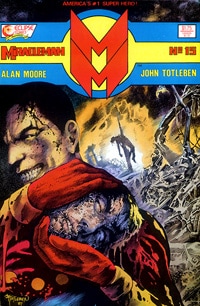
JT: There wasn’t much of a transition. I’d always drew the drew the way I drew. It was just a different approach because Miracleman had a superhero, sci-fi kind of look to it whereas Swamp Thing was more horror and organic. The horror element was in Miracleman too, but it wasn’t essential to Miracleman as it was in Swamp Thing. The difference really for me was that Swamp Thing was organic in nature, in terms of the way we approached it. Miracleman was architectural in nature. It seemed it had to be built because there was a lot of figuring out such what the designs were like in Olympus and even the story construction of the panels.
PO: The violence in Miracleman #15 was unparalleled do you think it changed comics?
JT: I couldn’t say about the level of violence, how do I say this? Just the idea of how Miracleman was handled as a superhero comic was influential. But I’m not sure to what degree because I don’t follow a lot of superhero comics.
PO: More recently the issues have been reprinted by Marvel, have you retained any royalties?
JT: Yeah. After waiting twenty two years it’s finally an opportunity to make something off it.
PO: The comics have been re-coloured digitally, have you had a look at them and what are your thoughts?
JT:As far as the overall restoration, they’re much better now with the digital enhancements and the ability to restore them right from the original art, the colouring and the lettering are re-done. With the colouring Steve Oliff tried to keep to the spirit of what Sam Parsons had done while doing his own thing and some of the advantages of modern digital manipulation. Also, the lettering has been re-done still keeping to the same style that Wayne Truman used but making it more neater and cohesive.
PO: How does a younger generation of readers look at Miracleman?
JT: I think younger readers probably have already been exposed to those influences in other comics, so when they look at Miracleman it probably doesn’t seem like a bigger deal back in 1988 or whatever. They don’t get the full effect of that. It’s kind of similar to rock music where someone listens to Jimi Hendrix nowadays; they may not get the full effect of the intensity he really got across back then because all those influences have been absorbed into the culture of rock guitar techniques and so on. The full effect just can’t be felt. That’s what’s it’s like with Miracleman. You had to have been there.
PO: Comic art is always evolving. What are your thoughts on current artists?
JT:I haven’t read a comic in a long time so I don’t know what’s going on. (Laughs)
PO: You have an eye condition, a disease that affects your sight, how do you manage on a day to day basis?
JT: I can manage pretty well; I just have to be careful around a lot of things. If I’m walking about I use a white cane these days; it’s just a matter of paying attention. Don’t step into the pothole! (Laughs) There are of situations where I need help usually my wife is my guide person. Getting around in large places, crowds, things that maybe a lot of obstacles stairs, conventions! Anything a normal person would think twice about. I would consider.
This interview was conducted at London Super Comic Con 02/21/2016.

